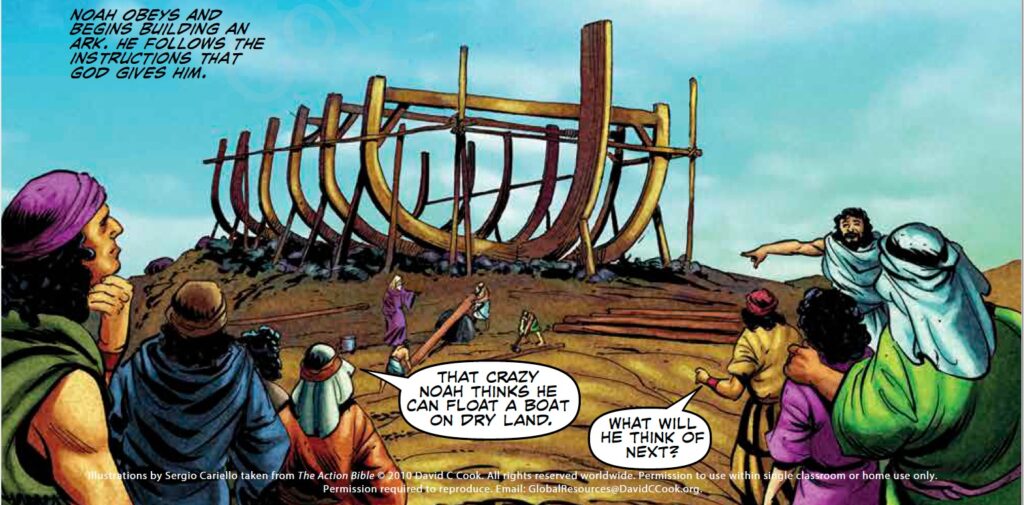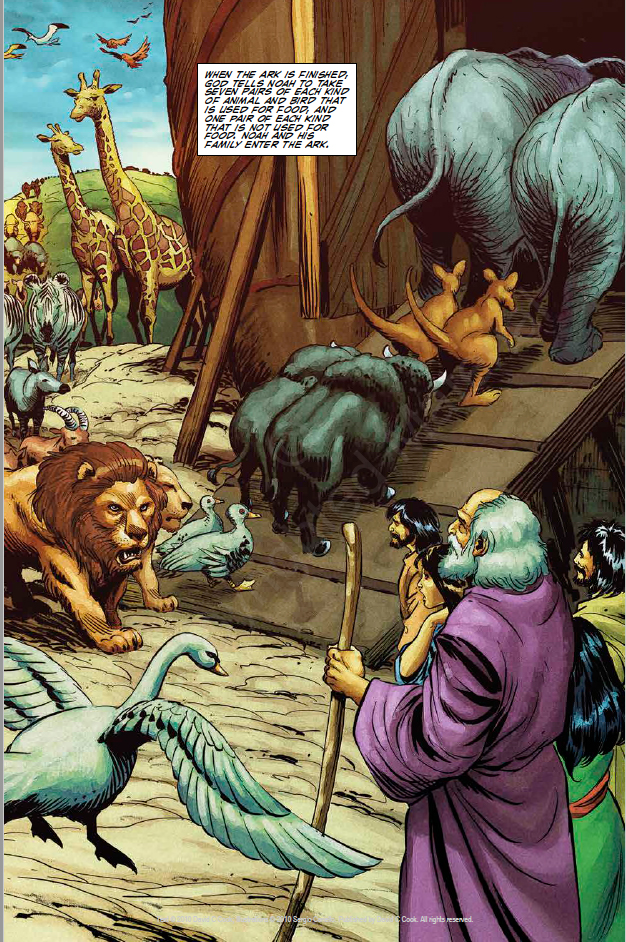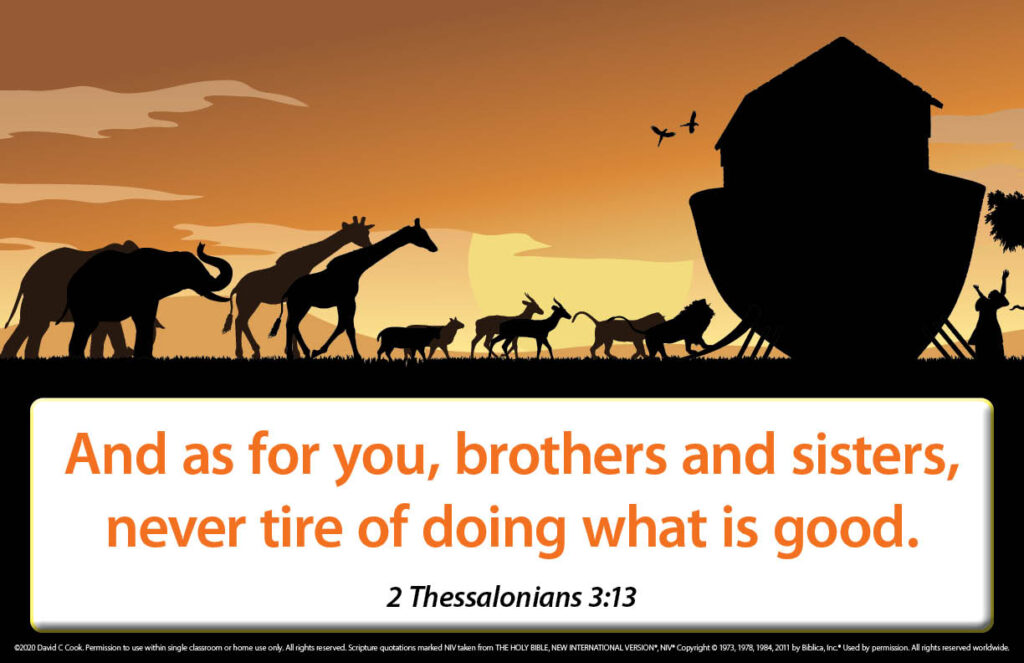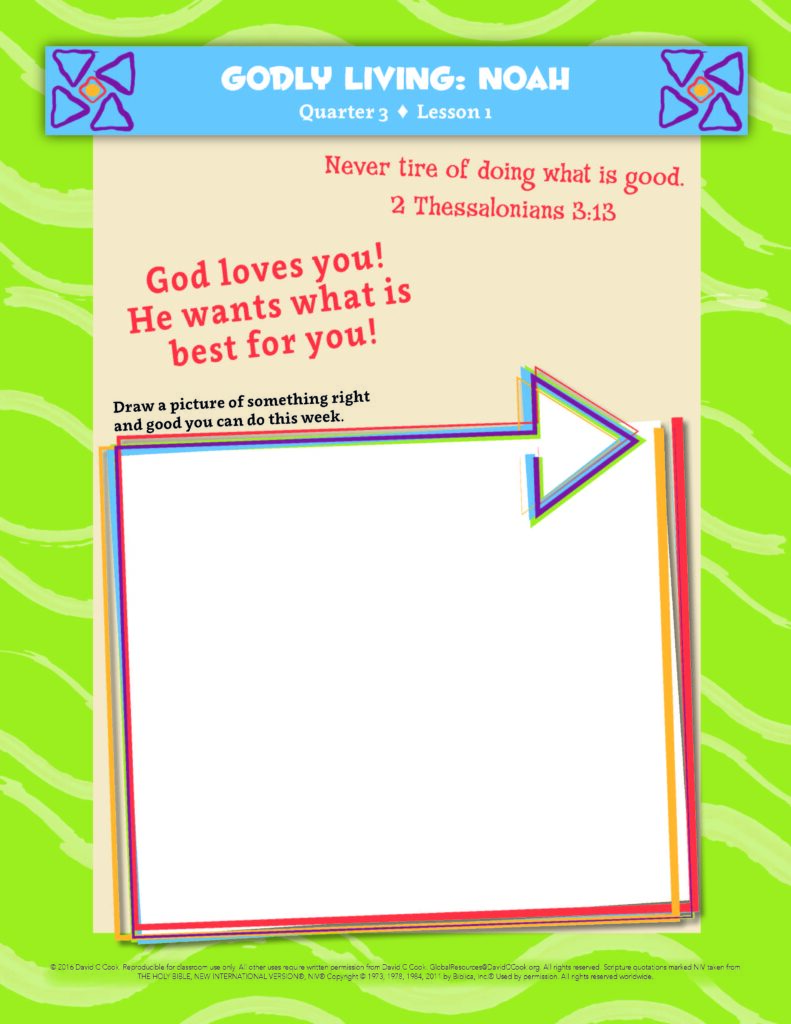During the lesson, the information for you to know is written in regular type, and what we suggest speaking or reading aloud to children is in bold. All resources for this lesson, including the Teacher Guide, Student Page, Family Connection Card, and other resources can be downloaded in a ZIP file by clicking on the following link:
In some lessons you will find "resource articles." These are articles written by experts from around the world to help equip you for your work with children and adolescents. Share them with parents or guardians if you consider it appropriate.
And as for you, brothers and sisters, never tire of doing what is good.
2 Thessalonians 3:13
The Bible is filled with stories about people who gave in to the pressure of those around them and did the wrong thing instead of the right thing. Today’s lesson will encourage the children to do the right thing even when it is hard or unpopular. But what about you? As adults we hope we have learned to not give in to peer pressure. But do we ever lower our standards because a particular action is an accepted part of our society?
Noah did not have the Bible or a church family to help him do what was right. But he did have faith that God’s ways are always the best, even if they are not the easiest. Think about something you do in your life that is less than God’s best. Then think about the resources you have available that can help you resist negative peer pressure, such as Christian friends and the Bible. Pray. Ask God to strengthen you to do what is right. Finally, take courage! You are not alone. Just as God was on Noah’s side, helping him to do what was right, He is also on your side, helping you to do what is right.
Let the families of your students know that they are learning about the importance of doing what is right even when those around them are doing what is wrong. Encourage all of the family members to share with their child about a time when they made a right choice, even when it was hard.
Teacher Tip: If possible, email or text the Family Connection Card to the families of your students.
Greet your children by name as they arrive. Ask them what activities they like to do with their friends, such as sports, making jewellery, or playing simple outdoor games. As you show interest in children’s lives, they will feel more comfortable sharing with you.
Gather the children for an activity and ask them about the right way to behave when class begins.
Sit quietly and listen to the teacher.
Good answers! You know the right way to behave when you come to class.
Choose 1 child to leave the teaching area for a minute. Be sure the child you choose is trustworthy and outgoing. This child should go to a place where she cannot see or hear the rest of the class. While she is gone, help the class decide on a silly action they can all do when the child returns. For example, the children may decide to hop on 1 foot or wave their arms above their heads. They must all do the same action. The idea is that all of them will be acting the wrong way rather than the right way as class begins. Have the class begin their silly action. Invite the child back. Tell her that you expect her to act the right way because class is starting. She will be confused because everyone else is doing a silly action. She may sit quietly, which is the right way to behave. Or she may join the other children and do the silly action, which is the wrong way to behave. After about 30 seconds, have all the children sit down quietly. Thank the child for participating with a good attitude.
Peer pressure is the pressure to do what our friends or people around us are doing. (Name of child who left the class for the activity) just experienced something called peer pressure. The right way to behave at the beginning of class is to sit quietly and listen to the teacher. All of you were doing a silly action instead of doing the right thing. When (name of child who left the class for the activity) entered, she had to decide if she would do the right thing or do what everyone else was doing. This example is silly. But we all face peer pressure in more serious situations.
Give the children a chance to share. If no one wants to share, that is okay.
Give the children a chance to share. If no one wants to share, that is okay.
Today we will learn about a man in the Bible named Noah who did what was right even when everyone around him was wicked and violent.
Divide the children into groups of 3–4. Have them sit in their groups but in front of you.
Let’s read about Noah from the Bible.
Optional: If you are using The Action Bible, have the children read the story on pages 29–34 before asking the questions below.
Read Genesis 6:9 directly from your Bible if possible. This stresses that you are teaching from the only true Word of God.
This is the account of Noah and his family. Noah was a righteous man, blameless among the people of his time, and he walked faithfully with God.
Genesis 6:9
The word “righteous” means acting in a way that is morally right. Someone who is righteous lives according to God’s ways. He cares about other people and treats them fairly. He obeys God. Noah was a righteous man who walked with God. Noah followed God’s ways.
Let’s continue reading to find out what the world was like during Noah’s time.
Now the earth was corrupt in God’s sight and was full of violence. God saw how corrupt the earth had become, for all the people on earth had corrupted their ways.
Genesis 6:11–12
These verses describe the people on earth as corrupt and violent. To be corrupt means to act dishonestly in order to take advantage of others. To be violent means to hurt others and act wickedly.
Children may answer that their world and community are similar to Noah’s. Many people do evil things and hurt people. Many people lie and cheat in order to make money.
When God looked at the earth, He saw violence and corruption. This was not His plan for the people He loved. Something had to be done. So God told Noah that He was going to destroy the world. He would bring floodwaters on the earth and destroy every person and animal. But God would save Noah and his family.
He told Noah to build a large boat out of wood. He called this boat an ark. God gave Noah specific instructions about how to build it. He told Noah to fill the ark with a male and female of every kind of bird and animal. He told him to bring every kind of food that his family and the animals would need to eat. Let’s read the Bible to see how Noah responded to God’s instructions.

Read Genesis 6:22—7:1.
Noah did everything just as God commanded him. The Lord then said to Noah, “Go into the ark, you and your whole family, because I have found you righteous in this generation.”
Genesis 6:22—7:1
Have the groups quickly and quietly show each other how they think Noah may have felt. They can only use their faces, and they must do it quietly. Give them about 2 minutes to do this. Walk among the groups as they act. Then have the class quietly listen to the rest of the story.
The Bible does not specifically tell us what other people said to Noah as he built the huge ark. But we do know that the people on earth were corrupt and violent.
Children may share that other people probably thought Noah was foolish for building a big boat on dry land. They may have laughed at him. They may have tried to hurt him or the ark.
When Noah chose to obey God, he chose to do what no one else was doing. He was not corrupt or violent like everyone else. He did not do what would make him popular or liked by other people. He listened to God and did what God told him to do.
Noah took his wife and sons and their wives into the ark. God caused the animals to come to Noah and He put them in the ark too. Then God shut the door. For 40 days and nights the flood came until the ark rose up on the waters. Every living thing—animals, birds, and people—all died. Only Noah and his family were left, along with the animals in the ark. The flood continued for 150 days.

Noah obeyed God even when people all around him were sinning and doing evil things. However, this story is not just about Noah. It is about God. God loves the earth and the people He created. It made Him sad and angry to see people behaving so wickedly. He knew He needed to get rid of the evil.
He could have destroyed every single person, but He did not. God is gracious. He knew Noah was a righteous man. He chose to save Noah and his family. God wanted to preserve humanity through Noah’s family. Noah understood that God is good. He understood that God wants what is best for us, even though what is best and right is not always the easiest. Let’s learn a Bible verse about doing what is right.
If you are using the optional Memory Verse poster, show that to the children while you read the verse directly from your Bible.
And as for you, brothers and sisters, never tire of doing what is good.
2 Thessalonians 3:13

This is an easy verse for the children to memorize. Read it several times. Then have the children join you in saying it. Next ask the children to stand and walk around the room. They should meet up with another child and say the child’s name followed by the verse. They should meet up with at least 3 other children. Keep the Memory Verse poster available in case the children need a reminder of the words.
Gather the children back together. Explain that they will be doing role-plays in small groups. A role-play is a simple skit in which they act out what they would do in a real-life situation. Each group will choose 1 person to be the Choice Maker. You will read a situation, and the rest of the group will act out a wrong choice. Then the Choice Maker will act out a response that is right and pleasing to God. The Choice Maker’s goal is to be like Noah, who never got tired of doing what is right.
Have the children gather with the same small groups from earlier in the lesson. Each group will select 1 person to be the Choice Maker. Then read the first situation and give the groups 2–3 minutes to act it out. Walk among the groups as they act to encourage them. Once they have finished, ask 1–2 groups to perform their role-plays again for the whole class.
Have the groups select a different Choice Maker for each of situation. Follow the same steps for each situation.
Situation 1: You are at school. The class is taking a test. The teacher put the answer paper on her desk and left the room for a few minutes.
Situation 2: You are walking with your younger brother and you are both hungry because there is no food at your house. As you walk through the market, you notice that the fruit vendor is not paying attention to the table filled with fruit.
Situation 3: A boy became a Christian, but his family members were not believers. Because he refused to worship idols with them, they yelled at him and beat him.
Noah lived during a time when people around him were doing wrong things. They were wicked and violent. They did not live according to God’s ways. But Noah knew God’s way was the best way. He obeyed God and made right choices, even when no one else did. Noah experienced God’s best for his life.
God loves you very much! He wants you to make right choices, too, because He knows that is what is best for you. God always wants what is best for you!
Have the children find partners and sit down. Their partners should be children they have not worked with yet during this lesson.
Explain that the children will tell their partners about their upcoming week and what they can do that is right and good. For example, they might pray for a friend who is sick. They might help an elderly neighbour get water or pick fruit. They might study the evening before there is a big test instead of playing with their friends. After 2–3 minutes, ask a few volunteers to share what they will do this week that is right and good.
Optional Supplies: Pass out paper and crayons. Have the children draw pictures of themselves doing things that are right and good this week. Each picture should show them doing something God would be pleased about. For example, they might pray for a friend who is sick. They might help an elderly neighbour get water or pick fruit. They might study the evening before there is a big test instead of going out and playing with their friends. At the bottom of their picture, children they should write, “I want to make right choices like Noah did.”
When the children have finished, ask a few volunteers to share what they have drawn. Suggest they keep their pictures where they will see them often. Every time they see the picture, it will remind them again that they want to make right choices and please God as Noah did. They can remember that God loves them and wants what is best for them!
If you are using Student Pages, the children can draw their pictures on the page.

After 3–5 children have shared the good things they plan to do, ask all the children to stand up, bow their heads, and hold their hands out with palms open and facing up. This posture is used throughout the Bible as a way of showing surrender and praise to God. Finish your time by praying this blessing over the children. It is based on Noah’s example and 2 Thessalonians 3:13:
Blessing: May you know that God loves you and wants what is best for you! May He give you the strength to make good choices, even when people around you are doing bad things. With God’s help, may you never get tired of doing what is right.
If you have time, lead the children in singing this quarter’s worship song to help them to understand God’s character.
Life on Life ©2020 David C Cook. Reproducible for home or classroom use only. All other uses require written permission from David C Cook [email protected]. All rights reserved.